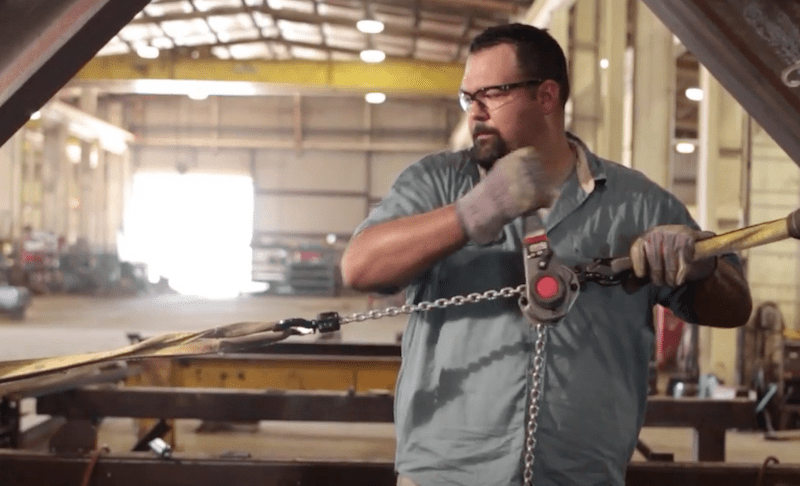Rema Tip Top Material Processing (Rema) and Chichester Metals Pty Ltd, a subsidiary of Fortescue Metals Group Limited (FMG) have been fined $112,000 and $64,000 respectively in Perth Magistrates Court following a come-a-long incident that broke a worker’s jaw at the Cloudbreak iron ore mine in the Pilbara in September 2014.
While both companies were charged in relation to the same com-a-long incident, Chichester was not charged for causing the injuries suffered as a result of the incident.
The court heard Adam Bromley, employed by Rema, was conducting maintenance work on the mine’s conveyor belt system when he was struck in the face by a hook attached to a ‘come-a-long’, a type of hand operated hoist.
Mr Bromley suffered a broken jaw, requiring the surgical insertion of a neurostimulator to suppress chronic pain, as a result of the incident.
Department of Mines, Industry Regulation and Safety Director Mines Safety Andrew Chaplyn said the hazards associated with conducting the maintenance work should have been understood and addressed.
“Mr Bromley and a co-worker were tasked with replacing one of the return rollers on the conveyor system,” Mr Chaplyn said.
“This task had work instructions that directed workers to use a particular Conveyor Belt Lifter to change return rollers on the conveyor system, however, Mr Bromley was not aware of the work instructions and neither worker had received any training on the work instructions.”
The department’s investigation found that while there were belt lifters available onsite, Mr Bromley did not know they were available.
The workers attempted to lift the conveyor belt off the return rollers by placing a spreader bar under the conveyor’s return belt. The spreader bar was then connected to the come-a-longs, slung around the conveyor framework, which were tensioned to lift the return belt off the roller.
However, this was unsuitable as it didn’t lift the conveyor belt high enough to access the return rollers due to excessive slack in the come-a-long chain.
The workers then inverted the come-a-longs, removed the slings, and used the main chain of the come-a-long in place of a sling, a technique known as back hooking, so they could lift the conveyor belt high enough to access the roller.
During the lift, the load chain slid up against the come-a-long hook’s latch. The latch was not designed to take this pressure and the chain dislodged through the latch. As the hook and chain of the come-a-long dislodged it whipped around and struck Mr Bromley in the face.
“Back-hooking is not an acceptable lifting technique to use on a come-a-long because the hooks are only designed to take pressure associated with a straight lift,” Mr Chaplyn said.
“They are not designed to take any pressure against the latch of the hook.”
Mr Chaplyn said there were a number of practicable measures that were available to both companies to prevent this incident from occurring.
“There was a failure to ensure safe processes and procedures were known and used by the workers,” he said.
“This was driven by inadequate training, instruction and supervision.
“Workers should not be required to guess whether a work method is safe or not. These hazards are known and should have been addressed by the company to ensure the work could be done safely.”
In handing down the penalty, the court took into account the companies’ early guilty plea.
Image: Representational purposes only. Not actual worker or equipment used.
Read more Mining Safety News














Add Comment